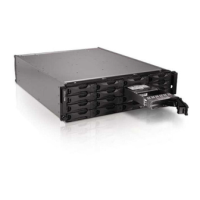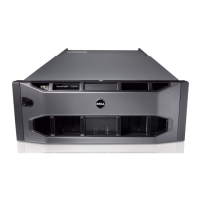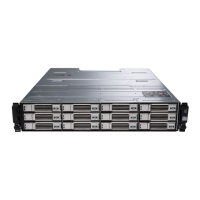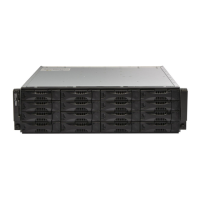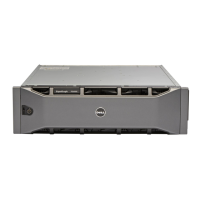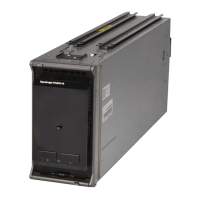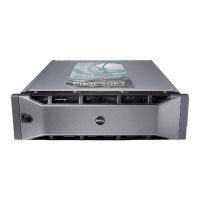March 2013 Dell EqualLogic Configuration Guide v14.1 5-39
Note: IQN names are assigned to volumes automatically when they are created. They
cannot be changed for the life of the volume. If a volume name is changed, the IQN
name associated with the volume will remain unchanged.
5.2.2 Volume features
Each volume supports a set of features and capabilities that include the following:
• Ability to define a volume as thin-provisioned
• Support for snapshots
• Support for replication
• Support for creating clones
• Support for multiple host shared access
Note: These block level volume features are not applicable to the component volumes
created by the NAS Service for the FS Series NAS Reserve.
5.3 Snapshots and clones
Snapshots are point in time copies of volumes. Snapshots have some features and properties similar to
volumes as well as some unique capabilities. Like volumes, snapshots can be assigned an iqn and
presented as volumes to a host. This allows hosts to mount a snapshot, potentially change the data in
the snapshot, or convert it to a real volume (clone) that has dedicated space allocated to it from the
free storage pool.
Snapshots require that space be reserved during volume creation (or after volume is created) to store
the snapshot(s) created from that volume. All snapshot reserve space for a specific volume always
resides in the same storage pool as the volume. By default, Group Manager allocates snapshot reserve
space equal to 100% of the host volume’s allocated space. This ensures that a 100% data change in the
volume can be protected by a single snapshot. This value can be set to a lower value based on the
application’s data change rate, snapshot/backup plan, or role that the snapshot will be used. The
following items should be considered when determine the size of a volume’s snapshot reserve:
• Data change rate for the application(s) who is using the volume
• Defragmentation policy of the OS or application using the volume
• The role or purpose for creating the snapshot(s).
Snapshots have the following characteristics:
• They are identified using names that consist of the parent volume name plus a date/time
stamp indicating when the snapshot was created as a default name.
• If name of parent volume changes, existing snapshots iqn names do NOT change accordingly,
but retain their original iqn name.
• Deleting a snapshot’s parent volume deletes all associated snapshots for that volume.
• Snapshots of volumes with a high data change rate will require a larger snapshot reserve space.
• Snapshots have access control lists that are inherited from the parent volume by default.

